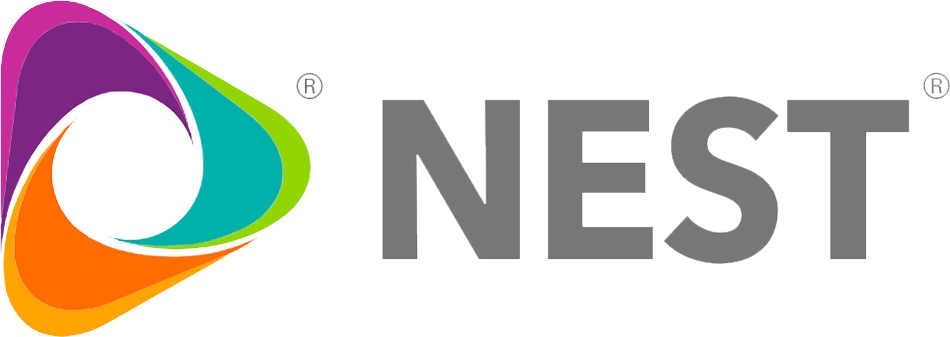“We have a huge problem on our hands. The labor shortage in the trades is not going away. I think it’s the next pandemic.”
So declared NEST CEO Rob Almond as he opened a panel discussion on the future of skilled trades at the company’s recent inaugural IFM Summit in Las Vegas.
As the industry leader in Integrated Facilities Management (IFM), NEST provides multi-site facilities and construction management for some of the world's top brands. It wrestles with the scarcity of skilled labor every dayーas do thousands of other companies.
During the session, Almond and the panel of industry experts discussed insights and strategies to expand trade networks in front of an audience of FM professionals and company leaders.
The panelists included: Sara Angus, Director of Construction, U.S. Licensed Stores, for global coffeehouse chain Starbucks; nonprofit Explore the Trades (ETT) Executive Director Kate Cinnamo; and Atlas Electrical, Air Conditioning, Refrigeration & Plumbing Services, Inc. President Sarah Hammond, who’s also the Treasurer at nonprofit Women in HVACR.
Here are three key takeaways from the session.
#1 Building Awareness of the Trades Is Essential to Boosting Interest
Remember shop class in high school? If the answer is no, you’re probably not alone. Shop and other vocational programs have been on the decline in U.S. schools for decades due to budget cuts and changes in educational priorities. Many apprenticeship and mentorship programs have also been phased out. In short, kids today simply don’t see the trades in action.
Cinnamo knows this only too well, as ETT is focused, in part, on reintroducing students to the trades industry.
“We’re looking at K through 12 because the kids don’t even know being a plumber, HVAC technician, or electrician is a thing,” she explained.
“Family dynamics have changed, too,” agreed Hammond. “Children no longer spend as much time with their parentsーwatching and learning [the trades]ーlike they did generations ago.”
Resources for educators are also not readily available. ETT partners with the American School Counselors Association to provide promotional and educational aides that link the trades to current curriculaーincluding STEM (science, technology, engineering, and math)ーand resources where educators and students can learn more about trades career paths.
Indeed, making the connection between school and industry is key to reigniting the passion for the trades in kids.
How do we do this? Including the trades in career fairs or ensuring they’re represented at middle and elementary school career days is a start. Developing a high school mentoring program or even volunteering to teach a class are other viable pathways.
Almond brought up another point about including the core trades in the mix.
“Janitorial hard surface floor cleaning,” he said. “That trade is diminishing, but we still have to maintain the floors. And what was the number one priority through COVID? Cleanliness.”
The group agreed these people are heroes, and should be treated as such. They could be showcased in marketing materials, along with the other trades, and acknowledged for the vital work they do.
#2 Women Are Significantly Underrepresented in the Trades
Less than 10% of tradespeople are women. Increasing their numbers would not only help mitigate the current trade industry shortage, but open up a rewarding career path for many.
Of course, the panel perfectly illustrated the point. All three women are successful leaders in the industry and are forging the way for the next generation of tradeswomen to make their mark.
Hammond’s work with Women in HVACR is indicative of the commitment to this goal. The organization provides scholarships to women pursuing trades education and training, and has just established an endowment to support this initiative over the long term.
“If you’re a woman in a trades role, share it on social media so other women can see you in the industry,” she explained.
“Mentorship is also a huge [issue] for women, at the high school and college levels and even early in their careers,” added Angus一additionally telling attendees that when she started in construction she was always the only woman on big job sites.
“Women need to be advocates for women,” Angus reiterated. “My team at Starbucks is now more than 50% women. Why? Because I hire women. There’s capable talent out there.”
What else can be done? Lots. Hammond discussed the HVACR Ambassador program, in which members visit schools and colleges to provide information about opportunities for women in manufacturing, distributorship, and adjacent professions.
“We need people like you一who have the availability and are in front of these schools一to be vocal about the opportunities,” she told the audience.
The message? Women need to see other women in the trades to know it’s possible.
#3 The Trades Can Be a Career, Not Just a Job
Skilled trades are just thatーskilled.
As Angus explained, this is a field where students can get a bachelor’s degree, master’s, or even a Ph.D. There’s a body of knowledge and research in the trades, much like any other skilled discipline, such as finance, engineering, or HR. Practitioners can spend their lives honing their skills and deepening their experience.
“It’s a career path, a really viable career path,” she added. “I’m paying entry-level kids $95,000一and there’s not enough of them.”
Alternatively, if a four-year college degree isn’t affordable, trade school often can be. And many students can graduate with essentially recession-proof jobs paying competitive salaries.
Job opportunities are also not limited to major general contracting firms. Nearly all major brands with multiple sites include in-house construction and real-estate management. In fact, real estate can often be a significant driver of corporate growth.
Doing work that matters, as the trades offer, can also be deeply rewarding. Repairing a generator at a hospital, for example, is about more than just the equipment一it can save lives.
Another benefit Cinnamo highlighted is around sustainability and climate change, especially for members of the Gen Z generation focused on making a difference.
“One message we can use in this industry is climate,” she explained. “So for example: ‘That device in your hand is saving energy and money.’”
“Again, it’s the awareness factor,” added NEST’s CEO Rob Almond as a final thought. “It can’t just be us. Imagine if Washington [DC] could spend a day talking about these jobs.”
Imagine, indeed.
Check out the audio link for the entire discussion.
Learn More About the Panelists
Sara Angus, Director of Construction, U.S. Licensed Stores, Starbucks
Kate Cinnamo, Executive Director, Explore the Trades (ETT)
Sarah Hammond, President, Atlas Electrical, Air Conditioning, Refrigeration & Plumbing Services, Inc. and Treasurer, Women in HVACR







